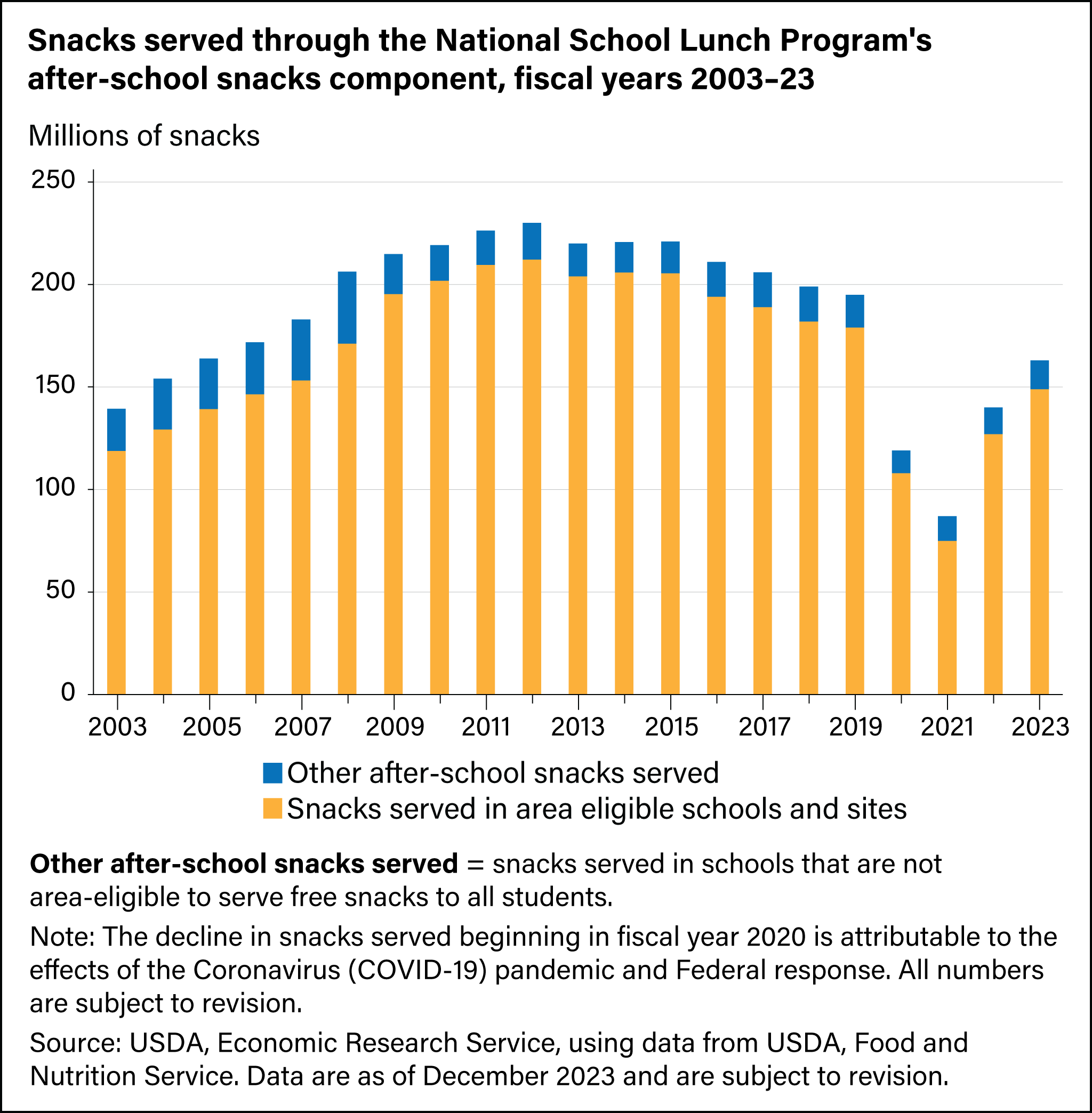USDA provides after-school snacks to schoolchildren through either its National School Lunch Program (NSLP) or the Child and Adult Care Food Program (CACFP). USDA also provides after-school meals through the CACFP.
Through the NSLP, participating schools can offer nutritious snacks as part of after-care educational programs or enrichment activities to enrolled students. Snacks meeting Federal nutrition requirements are subsidized on a sliding scale based on whether students qualify for free, reduced-price, or full-price meals. Schools in which at least 50 percent of students qualify for free or reduced-price meals (i.e., come from families with household incomes below 185 percent of the Federal poverty line) are "area eligible" and have their snacks subsidized at the free rate for all participating students.
Participation in the NSLP After-School Snack Program—authorized by Congress in 1998—is much smaller than participation in NSLP or the School Breakfast Program. In fiscal year (FY) 2023, the program provided an average of 1.2 million snacks daily and 163 million snacks for the year. Approximately 91 percent of snacks were served in high-need, area-eligible schools.

Download chart data in Excel format
The onset of the Coronavirus (COVID-19) pandemic in the second half of FY 2020 disrupted the provision of snacks through the program by limiting the operations of some schools. In response to these disruptions and to meet rising food needs during the pandemic, USDA issued waivers allowing for flexibilities in the implementation of its child nutrition programs. The number of snacks served rebounded beginning in FY 2022. To learn more about these pandemic-era changes, please see:
USDA, Economic Research Service examined the school and district-level characteristics associated with offering the NSLP After-School Snack Program using USDA’s School Nutrition Dietary Assessment Study IV, conducted from January to June in 2010. Schools with a higher share of students receiving free or reduced-price lunches were more likely than other schools to offer the program, as were those in high poverty districts and urban areas. Elementary schools were more likely to offer the program than middle schools, whereas high schools were less likely to offer it. To learn more, please see:
Through USDA's CACFP, after-school snacks can be served by third-party sponsors of community-based after-school enrichment programs in areas where at least 50 percent of the children are eligible for free or reduced-price meals. Beginning in 2000, some State CACFP programs were given the option to offer after-school meals through community programs in these at-risk areas. In December 2010, Congress extended this option to all States. Through this option, community programs may also serve breakfast or lunch on weekends, holidays, and school breaks—addressing gaps that may occur when at-risk children are not in school.
All values and figures are based on data available as of December 2023 and are subject to revision.
For information on updates to the program during the COVID-19 pandemic, see USDA, Food and Nutrition Service Responds to COVID-19.
Additional studies and information about program eligibility requirements, benefits, and application processes are available from the Food and Nutrition Service Child Nutrition Programs web page.
